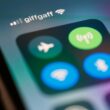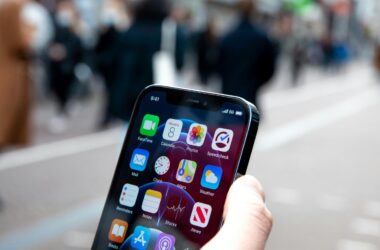Introduction
Bluetooth technology is a vital feature for many iPhone users, enabling seamless connectivity with a variety of devices such as headphones, speakers, cars, and more. Its importance is underscored by the convenience and wireless freedom it provides, making it an integral part of our daily tech interactions. However, despite its advantages, Bluetooth connectivity can sometimes be plagued with issues that disrupt this convenience.
Common Bluetooth problems faced by iPhone users include the inability to connect to certain devices, frequent disconnections, and issues with discovering new devices. These problems can arise for various reasons, such as software glitches, interference from other electronic devices, or hardware malfunctions.
While basic troubleshooting steps can often resolve these issues, there are times when more advanced techniques are necessary to get your Bluetooth connection back on track. In this post, we will delve into these advanced troubleshooting methods, providing you with a comprehensive guide to solving persistent Bluetooth problems on your iPhone. Whether you’re dealing with connectivity issues after a software update or struggling to pair your iPhone with your car’s Bluetooth system, these advanced tips will help you restore seamless connectivity and enhance your Bluetooth experience.
1. Understanding Common Bluetooth Problems
iPhone users frequently encounter a variety of Bluetooth issues that can be both frustrating and disruptive. Here are some of the most common problems:
- Not Connecting: One of the most prevalent issues is when an iPhone fails to connect to a Bluetooth device. This can happen with new devices as well as previously paired ones.
- Frequent Disconnections: Another common problem is the Bluetooth connection dropping intermittently, causing interruptions in audio or data transfer.
- Device Not Discoverable: Sometimes, the iPhone fails to detect nearby Bluetooth devices, making it impossible to establish a connection.
- Poor Audio Quality: Users might experience choppy or distorted audio when using Bluetooth headphones or speakers.
- Pairing Issues: Difficulty in pairing the iPhone with certain devices, especially car systems, is also a common complaint.
1.1 Reasons Behind These Issues
Understanding the root causes of these problems can help in troubleshooting them effectively:
- Software Updates: iOS updates can sometimes introduce bugs that affect Bluetooth functionality. Additionally, if the connected device hasn’t been updated, compatibility issues may arise.
- Interference: Bluetooth operates on a specific radio frequency that can be interfered with by other electronic devices, Wi-Fi networks, or even physical obstructions.
- Hardware Issues: Physical damage to the iPhone’s Bluetooth antenna or internal components can lead to connectivity problems. Similarly, issues with the Bluetooth device itself can cause failures.
- Settings and Configurations: Incorrect Bluetooth settings or configurations on either the iPhone or the connected device can prevent proper connectivity.
- Software Glitches: Temporary software glitches or corrupted settings files can also disrupt Bluetooth connections.
By understanding these common problems and their potential causes, you are better equipped to troubleshoot and resolve Bluetooth issues on your iPhone. In the next sections, we will explore both basic and advanced troubleshooting techniques to help you get your Bluetooth connections working smoothly again.
2. Basic Troubleshooting Steps
Before diving into advanced troubleshooting, it’s essential to start with some basic steps that can often resolve common Bluetooth issues quickly. Here’s a simple guide to get you started:
2.1 Restart iPhone and Bluetooth Devices
Sometimes, the simplest solutions are the most effective. Restarting both your iPhone and the Bluetooth device you’re trying to connect can resolve minor software glitches and reset connections.
- Restart Your iPhone:
- Hold down the power button (or the power button and volume button on newer models) until the “slide to power off” slider appears.
- Slide to turn off your iPhone, wait a few seconds, then hold the power button again to turn it back on.
- Restart Your Bluetooth Device:
- Turn off the Bluetooth device, wait a few seconds, then turn it back on.
- Ensure it is fully charged or has sufficient battery power.
2.2 Ensure Bluetooth is Turned On and Devices are in Pairing Mode
Double-check that Bluetooth is enabled on your iPhone and that your devices are in pairing mode.
- Turn On Bluetooth on Your iPhone:
- Go to Settings > Bluetooth and make sure the toggle is set to “On.”
- Alternatively, open the Control Center and tap the Bluetooth icon to enable it.
- Put Your Device in Pairing Mode:
- Consult the device’s manual for specific instructions on how to activate pairing mode. Typically, this involves holding down a button until a light starts flashing.
2.3 Check for Software Updates on the iPhone
Software updates often include fixes for bugs and compatibility improvements that can resolve Bluetooth issues.
- Update Your iPhone:
- Go to Settings > General > Software Update.
- If an update is available, tap “Download and Install.”
- Ensure your iPhone is connected to Wi-Fi and has enough battery power or is plugged into a charger.
By following these basic troubleshooting steps, you can often resolve minor Bluetooth connectivity issues without needing to delve into more complex solutions. If these steps do not resolve your problem, continue to the advanced troubleshooting techniques we’ll discuss next.
3. Advanced Troubleshooting Techniques
If basic troubleshooting steps haven’t resolved your iPhone Bluetooth issues, it’s time to move on to more advanced techniques. These methods address deeper software and hardware problems that might be affecting your Bluetooth connectivity.
3.1 Reset Network Settings
Resetting network settings can clear out any corrupted configurations or conflicts that might be causing Bluetooth issues. This action will reset all network-related settings, including Wi-Fi networks and passwords, cellular settings, and VPN/APN settings.
- Why This Helps:
- It removes any corrupted network settings that might interfere with Bluetooth functionality.
- It provides a fresh start for your network connections.
- How to Reset Network Settings:
- Go to Settings > General > Reset.
- Tap on Reset Network Settings.
- Enter your passcode if prompted, and confirm the reset.
- Your iPhone will restart, and you will need to re-enter Wi-Fi passwords and reconfigure other network settings.
3.2 Forget and Re-Pair Bluetooth Devices
Sometimes, the connection between your iPhone and a Bluetooth device can become corrupted. Forgetting the device and then re-pairing it can establish a fresh connection.
- Why This Helps:
- It removes any corrupted connection data between your iPhone and the Bluetooth device.
- Establishes a new, clean connection.
- Step-by-Step Guide to Forget and Re-Pair Devices:
- Go to Settings > Bluetooth.
- Tap the i icon next to the device you’re having trouble with.
- Select Forget This Device and confirm.
- Turn the Bluetooth device off and then back on to enter pairing mode.
- Go back to Settings > Bluetooth on your iPhone, and select the device to pair it again.
3.3 Check for Interference
Interference from other electronic devices can disrupt Bluetooth signals. Identifying and minimizing sources of interference can improve connectivity.
- Common Sources of Interference:
- Other Bluetooth devices operating nearby.
- Wi-Fi networks and routers.
- Microwaves and cordless phones.
- Physical obstacles like walls and furniture.
- How to Minimize Interference:
- Move closer to the Bluetooth device to reduce the distance.
- Turn off or move other electronic devices that might be causing interference.
- Use Bluetooth devices in an open space with fewer physical barriers.
3.4 Factory Reset as a Last Resort
A factory reset should be considered only as a last resort, as it will erase all data on your iPhone and return it to its original factory settings. This step can resolve deep-rooted software issues that affect Bluetooth functionality.
- Cautions:
- Ensure all your important data is backed up to iCloud or a computer.
- Be prepared to set up your iPhone from scratch after the reset.
- Steps to Perform a Factory Reset:
- Go to Settings > General > Reset.
- Tap Erase All Content and Settings.
- Enter your passcode and confirm the reset.
- Follow the on-screen instructions to set up your iPhone as a new device or restore from a backup.
By following these advanced troubleshooting techniques, you can tackle persistent Bluetooth problems on your iPhone. These methods address deeper issues that basic troubleshooting steps might not resolve, ensuring a more stable and reliable Bluetooth connection.
4. Specific Issues and Solutions
Bluetooth issues can sometimes be specific to certain scenarios. Here are solutions to some common, specific problems you might encounter with your iPhone’s Bluetooth connectivity.
4.1 Issues After iOS Update
iOS updates can occasionally introduce bugs or compatibility issues that affect Bluetooth functionality. Here are some tips for resolving update-related Bluetooth problems:
- Restart Your iPhone: Often, a simple restart can resolve issues that arise immediately after an update.
- Hold down the power button (or power button and volume button) until the “slide to power off” slider appears.
- Slide to power off, wait a few seconds, then hold the power button again to turn it back on.
- Reset Network Settings: This can clear out any new settings conflicts introduced by the update.
- Go to Settings > General > Reset > Reset Network Settings.
- Check for Additional Updates: Sometimes, Apple releases minor updates to fix bugs introduced in major updates.
- Go to Settings > General > Software Update and install any available updates.
- Unpair and Re-Pair Devices: Forget your Bluetooth devices and pair them again to establish a fresh connection.
- Go to Settings > Bluetooth, tap the i icon next to the device, select Forget This Device, then pair it again.
4.2 Car Bluetooth Connectivity Problems
Troubleshooting Bluetooth connectivity issues between your iPhone and your car can be slightly different due to the complexity of in-car systems. Here are some steps:
- Delete Previous Pairings: Remove any old or existing pairings from both your iPhone and your car’s Bluetooth system.
- On your iPhone: Go to Settings > Bluetooth, tap the i icon next to the car’s name, and select Forget This Device.
- In your car: Refer to the car’s manual for instructions on removing paired devices.
- Restart Your Car’s Infotainment System: Sometimes, restarting the car’s system can resolve connectivity issues.
- Turn off your car completely, wait a few minutes, and then turn it back on.
- Update Car’s Firmware: Check if there are any firmware updates available for your car’s infotainment system.
- Refer to your car’s manual or manufacturer’s website for update instructions.
- Re-Pair Your iPhone:
- Put your car’s Bluetooth system into pairing mode (usually found in the car’s settings or via a specific button).
- On your iPhone: Go to Settings > Bluetooth and select your car from the list of available devices.
4.3 Bluetooth Not Discovering Devices
If your iPhone is not discovering Bluetooth devices, there are several steps you can take to resolve the issue:
- Ensure Devices Are Discoverable: Make sure the device you’re trying to connect to is in pairing mode and is discoverable.
- Refer to the device’s manual for specific instructions on enabling pairing mode.
- Toggle Bluetooth Off and On: Sometimes toggling Bluetooth can reset the discovery process.
- Go to Settings > Bluetooth and toggle the switch off and on again.
- Reset Network Settings: This can clear any settings conflicts that might be preventing device discovery.
- Go to Settings > General > Reset > Reset Network Settings.
- Restart Both Devices: Restart both your iPhone and the Bluetooth device to refresh their connection capabilities.
- Hold down the power button on your iPhone to restart it.
- Turn off and then turn on the Bluetooth device.
By following these specific troubleshooting steps, you can address and resolve common Bluetooth issues related to iOS updates, car connectivity, and device discoverability. These targeted solutions help ensure your iPhone maintains stable and reliable Bluetooth connections across different scenarios.
5. Preventive Measures and Best Practices
To maintain a reliable and stable Bluetooth connection on your iPhone, it’s essential to follow some preventive measures and best practices. These steps can help you avoid common issues and ensure smooth connectivity with your Bluetooth devices.
5.1 Regularly Update iOS and Bluetooth Firmware
Keeping your software up to date is crucial for optimal performance and compatibility.
- Update iOS: Regular iOS updates often include bug fixes, performance improvements, and enhanced compatibility with Bluetooth devices.
- Go to Settings > General > Software Update and install any available updates.
- Update Bluetooth Device Firmware: Many Bluetooth devices, such as headphones, speakers, and car systems, receive firmware updates that improve functionality and fix bugs.
- Check the manufacturer’s website or app for instructions on how to update your device’s firmware.
5.2 Keep Devices Within a Close Range
Bluetooth performance is best when devices are within a reasonable range of each other.
- Optimal Range: Most Bluetooth devices work best within 30 feet (10 meters) of each other. Staying within this range ensures a strong connection.
- Minimize Obstacles: Physical barriers like walls, furniture, and large metal objects can weaken the Bluetooth signal.
- Keep your iPhone and Bluetooth device in the same room or within line of sight whenever possible.
5.3 Avoid Interference from Other Electronic Devices
Interference from other electronic devices can disrupt Bluetooth connections. Here’s how to minimize this interference:
- Identify Sources of Interference: Devices like microwaves, Wi-Fi routers, cordless phones, and even other Bluetooth devices can interfere with your Bluetooth signal.
- Keep your iPhone and Bluetooth device away from these sources when trying to connect or use them.
- Switch to Different Channels: If your Wi-Fi network is causing interference, try changing the Wi-Fi channel on your router to reduce the conflict with Bluetooth signals.
- Access your router’s settings (usually through a web interface) to change the channel.
- Use 5 GHz Wi-Fi: If possible, use a 5 GHz Wi-Fi network instead of a 2.4 GHz one, as the latter shares frequencies with Bluetooth and is more prone to interference.
- Check your router’s settings to switch to a 5 GHz network.
By following these preventive measures and best practices, you can maintain a strong and reliable Bluetooth connection on your iPhone. Regular updates, keeping devices within range, and minimizing interference will help you enjoy a seamless Bluetooth experience.
Conclusion
Maintaining a reliable Bluetooth connection on your iPhone is essential for seamless interaction with your devices. Advanced troubleshooting techniques are crucial when basic steps fail, helping you resolve persistent issues and ensuring your Bluetooth functionality remains optimal. By following the outlined steps, from resetting network settings to addressing specific issues, you can effectively troubleshoot and resolve common Bluetooth problems.
We encourage you to try these solutions and share your experiences and any additional tips you have in the comments section. Your feedback can help others facing similar issues.
For more tech tips and troubleshooting guides, subscribe to our blog. Stay updated with the latest insights and solutions for your tech problems. If you found this post helpful, please share it on social media to help others.







